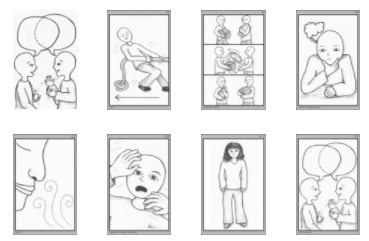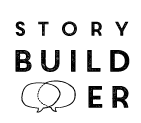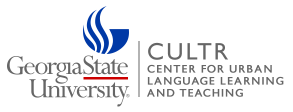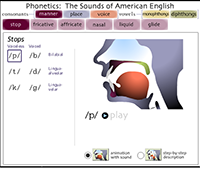offers a sample of free books for kids is various languages accessible online. The languages available are: English, Afrikaans, Danish, Dutch, Finnish, French, German, Indonesian, Japanese, Norwegian, Spanish, and Swedish.
- Details
- Category: Instructional Resources
- Hits: 4945
BookRix: Read Free Books Online and Download eBooks for Free in various languages.
- Details
- Category: Instructional Resources
- Hits: 1890
Story builder is a set of picture cards that are great to promote language use. It is language independent and it works with various levels of language proficiency. 
- Details
- Category: Instructional Resources
- Hits: 2387
Add a visual to opening questions on your lessons or inspire students to learn with creative image captions. Create and share for free using Pablo.

- Details
- Category: Instructional Resources
- Hits: 2355
Add great visuals to your lessons with free images from UNSPLASH, a very generous community of photographers around the world.
- Details
- Category: Instructional Resources
- Hits: 2245

Open Culture provides multiple links to multiple free resources and one its categories is language learning. http://www.openculture.com/freelanguagelessons
- Details
- Category: Instructional Resources
- Hits: 2295
"This textbook provides historical information, narrative techniques, lists of characters, themes and key words before they begin to read each chapter. While reading, vocabulary glossed in comprehensible Spanish appears in the margin opposite challenging words. Cultural references and proverbs from the work facilitate a deeper understanding. Each chapter contains checks for understanding and ends with activities to build vocabulary."
Source: Español Abierto at University of Austin - Recorridos Project
- Details
- Category: Instructional Resources
- Hits: 2590
CULTR is a partnership of the Departments of Modern and Classical Languages and the Department of Applied Linguistics/ESL in the College of Arts and Sciences and the Division of Learning Technologies in the College of Education, in collaboration with the Center for Instructional Innovation.
The Title VI Center for Urban Language Teaching and Research at Georgia State University endeavors to enhance the opportunities of urban and underrepresented students to achieve the language proficiency and cultural competence required for success in the modern global marketplace.
CULTR is a National Language Resource Center focused on Professional development opportunities for teachers. Advocating for language opportunities for ALL learners. Creation and dissemination of innovative learning tools and methods. Research into retention of language teachers and development of targeted workshops.
- Details
- Category: Instructional Resources
- Hits: 3493
![]() "Established in 1999 and operated by Duke University, the Slavic and East European Language Resource Center (SEELRC) has as its mission the improvement of the national capacity to teach and learn Slavic and East European languages. The Center accomplishes this by developing teaching and assessment materials as well as by supporting research and a variety of activities, including undergraduate and graduate education and exchange programs, conferences, seminars, and public outreach programs. The SEELRC is one of 15 Title VI funded Language Resource Centers.
"Established in 1999 and operated by Duke University, the Slavic and East European Language Resource Center (SEELRC) has as its mission the improvement of the national capacity to teach and learn Slavic and East European languages. The Center accomplishes this by developing teaching and assessment materials as well as by supporting research and a variety of activities, including undergraduate and graduate education and exchange programs, conferences, seminars, and public outreach programs. The SEELRC is one of 15 Title VI funded Language Resource Centers.
The mission of the SEELRC is to improve the national capacity to teach and learn Slavic and East European languages. The Center accomplishes this by developing teaching and assessment materials as well as by supporting research and a variety of activities, including undergraduate and graduate education and exchange programs, conferences, seminars, and public outreach programs. The SEELRC is a technology-intensive center and, as such, makes a habit of using and developing cutting-edge technological solutions."
- Details
- Category: Instructional Resources
- Hits: 2990
 "The goal of the National Foreign Language Resource Center (NFLRC) is to expand the nation’s capacity to teach and learn foreign languages effectively through research and materials development projects. The primary audience for most NFLRC endeavors is language instructors and applied linguists involved in these languages. However, NFLRC projects are intended to have implications for the teaching and learning of all languages, with results being disseminated to the larger educational community through publications, summer institutes, conferences, workshops, symposia, online learning events, etc. The NFLRC also conducts outreach to governmental agencies, language and area studies centers, and others concerned with strengthening the nation’s capacity in this field. Visit the sections below for more details."
"The goal of the National Foreign Language Resource Center (NFLRC) is to expand the nation’s capacity to teach and learn foreign languages effectively through research and materials development projects. The primary audience for most NFLRC endeavors is language instructors and applied linguists involved in these languages. However, NFLRC projects are intended to have implications for the teaching and learning of all languages, with results being disseminated to the larger educational community through publications, summer institutes, conferences, workshops, symposia, online learning events, etc. The NFLRC also conducts outreach to governmental agencies, language and area studies centers, and others concerned with strengthening the nation’s capacity in this field. Visit the sections below for more details."
- Details
- Category: Instructional Resources
- Hits: 2582

"The Center of Language Education and Research (CLEAR) in the College of Arts and Letters at Michigan State University was established in 1996 as a Language Resource Center (LRC) through a Title VI grant from the U.S. Department of Education. As an LRC, CLEAR strives to promote and support the teaching and learning of foreign languages in the United States through its various projects and outreach activities. In September 2014, CLEAR began its sixth funding cycle as one of 16 LRCs across the country. CLEAR continues to develop materials for foreign language teaching and learning, conduct research on the teaching and learning of foreign languages, and provide professional development opportunities for educators in the field.
- Details
- Category: Instructional Resources
- Hits: 3178
The National Language Resource Centers are an excellent source of resources for all areas of the language learning field. Below is a short description of the initiative and links to the main site as well as the various centers.
"In 1990, the Department of Education established the first Language Resource Centers (LRCs) at U.S. universities in response to the growing national need for expertise and competence in foreign languages. Now, twenty-five years later, Title VI of the Higher Education Act supports sixteen LRCs, creating a national network of resources to promote and improve the teaching and learning of foreign languages. LRCs create language learning and teaching materials, offer professional development opportunities for language instructors, and conduct and disseminate research on foreign language learning. All LRCs engage in efforts that enable U.S. citizens to better work, serve, and lead."
Source: http://www.nflrc.org/
Centers
 |
 |
 |
 |
 |
 |
 |
 |
 |
 |
 |
 |
 |
 |
 |
 |
- Details
- Category: Instructional Resources
- Hits: 2355
 The 2017 NCSSFL-ACTFL Can-Do Statements, the result of collaboration between the National Council of State Supervisors for Languages (NCSSFL) and the American Council on the Teaching of Foreign Languages (ACTFL) guide:
The 2017 NCSSFL-ACTFL Can-Do Statements, the result of collaboration between the National Council of State Supervisors for Languages (NCSSFL) and the American Council on the Teaching of Foreign Languages (ACTFL) guide:
- Language learners to identify and set learning goals and chart their progress towards language and intercultural proficiency;
- Educators to write communication learning targets for curriculum, unit and lesson plans;
- Stakeholders to clarify how well learners at different stages can communicate.
The statements are organized according to the Interpretive, Interpersonal, and Presentational Modes of Communication as described in the World-Readiness Standards for Learning Languages:
- Interpretive Communication: Learners understand, interpret, and analyze what is heard, read, or viewed on a variety of topics.
- Interpersonal Communication: Learners interact and negotiate meaning in spoken, signed, or written conversations to share information, reactions, feelings, and opinions.
- Presentational Communication: Learners present information, concepts, and ideas to inform, explain, persuade, and narrate on a variety of topics using appropriate media and adapting to various audiences of listeners, readers, or viewers.
Source: American Council on the Teaching of Foreign Languages (ACTFL) Website.
- Details
- Category: Instructional Resources
- Hits: 4648
Este sitio interactivo de la universidad de Iowa ofrece información de forma visual sobre el modo, lugar, y voz de la producción de los sonidos del español. Cada sonido es presentado con su equivalencia en el alfabeto fonético internacional, animación gráfica de la producción del sonido, y un corto video del uso del sonido en una palabra.
- Details
- Category: Instructional Resources
- Hits: 35962
This interactive website from the University of Iowa offers visual information about the manner, place, and voice of the production of sounds of the German language. Every sound is presented with its equivalence on the International Phonetic Alphabet (IPA), a graphic animation of the production of the sound, and a short video of an example of the use of the sound.
- Details
- Category: Instructional Resources
- Hits: 31541
Page 3 of 20






















